Enver Hoxha is the last Stalinist in Europe. Part of 1. Becoming a political leader
Albanians are descendants of the ancient Illyrian population of the Balkan Peninsula. They did not know developed statehood, although Albania was for a long time a field of intersection of interests of various neighboring states - Byzantium, the Epirus kingdom, Venice, Serbia. Back in the early twentieth century, Albania remained part of the Ottoman Empire. Under the rule of the Turks, the territory of modern Albania fell into 1571, when the Ottomans were able to completely eradicate Venetian influence in the country. The gradual Islamization of the Albanian population began and, to date, over 60% of Albanians practice Islam. Since the Turks managed to Islamize a significant part of the Albanian population, linguistically and culturally, it also differed from the Slavs of the Balkan Peninsula and the neighboring Greeks, in Albania there was no developed national liberation movement. Albanians were considered a reliable support of Ottoman rule in the Balkans and played an important role in the military-political system of the Ottoman Empire. However, when Turkey was defeated in the Russian-Turkish war of 1877 - 1878, in accordance with the San Stefan Peace Treaty, in the perspective of the land of modern Albania expected partition between Serbia, Montenegro and Bulgaria. Concerned about the unhappy prospect of being ruled by one of the Orthodox Slavic states, the Albanians became more politically active. Circles appeared that advocated the autonomy of Albania as part of the Ottoman Empire, and after Sultan Abdul-Hamid II was overthrown, in November 1908 a national Albanian congress took place, which again raised the issue of autonomy and the creation of a single Albanian alphabet in Latin basis. In 1909, rebellions broke out in Albania and Kosovo, which were brutally crushed by Turkish troops. 1911-1912 were marked by new uprisings in different areas of the country. When Ottoman Turkey lost the First Balkan War, on November 28, 1912 declared the political independence of Albania and formed the first national government under the leadership of Ismail Kemali.
Youth in a young state
The birth and first years of the life of the future Albanian leader Enver Hoxha fell on the “Ottoman” period in stories country. Enver Hoxha was born on October 16 1908 in the small town of Gjirokastra, located in the southern part of Albania. Founded in the 12th century, the city was part of the Epirus despotat, and from 1417 it was under the control of the Ottoman Turks.
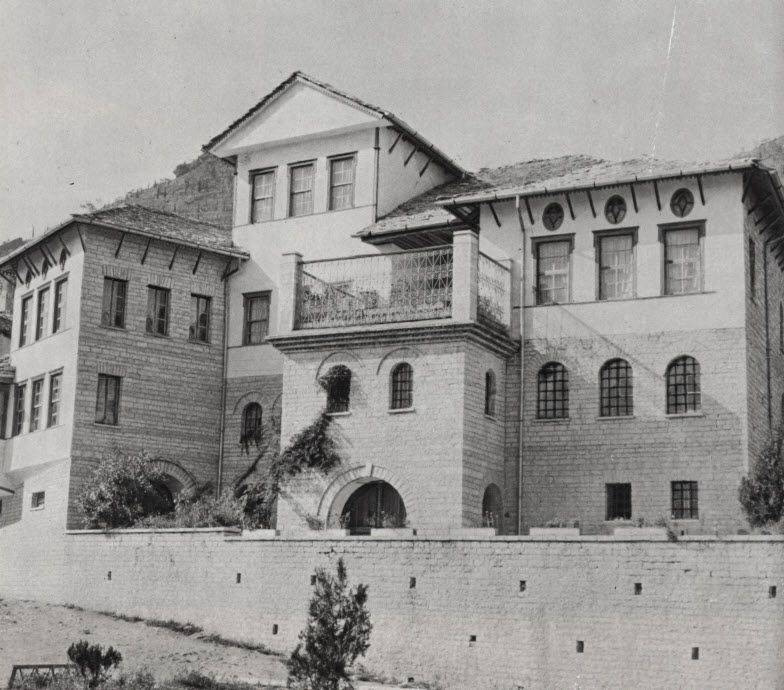
Khoja family home in Gjirokastra
Entering earlier than other Albanian cities in the Ottoman Empire, Gjirokastra became the center of the emergence of the national movement of Albanians in the late XIX - early XX centuries. Among the residents of Girokastra, many belonged to the Bektash Order, a very interesting and peculiar direction in Islam. The founder of the Sufi order, Bektaishiya Haji Bektashi, was known for not observing the prescriptions traditional for Muslims, including regarding namaz. Bektashi revered Ali, which related them to the Shiites, had ritual food from bread and wine, which united them with Christians, differed by free-thinking and skeptical attitude to orthodox Islam. Therefore, Bektashyya became popular among former Christians who were forced to convert to Islam in order to get rid of the increased tax and other discriminatory measures of the Ottoman government against the Gentiles. The parents of Enver Hoxha also belonged to the Order of Bektashyya. Since the father of the future Albanian “Communist number one” was engaged in the trade of fabrics and was entirely focused on his business, he entrusted his son’s upbringing to Uncle Heesen Khoja. A supporter of the independence of the Albanian people, Hisen at the same time adhered to relatively liberal ideas and criticized the repressive actions of the Ottoman, and then the independent Albanian governments.
The Hoxha family was well-to-do and the young Enver received a very good education for the native of the country, in which at that time 85% of the inhabitants were generally illiterate. Enver graduated from elementary school in Gjirokastra in 1926, after which he entered the lyceum in Korca, which he graduated four years later, in the summer of 1930. It is known that in his younger years Khoja junior to art and culture, loved to write poetry and read a lot. He perfectly mastered French and Turkish. Turkish language in Albania had spread due to centuries-old cultural ties and the powerful influence of Turkish culture on Albanian, and to France the Albanian intelligentsia experienced quite understandable - it seemed to the Balkan provincials an unattainable model of high culture, political and economic development. After graduating from the 1930 Lyceum in Korce in the summer, young Enver Hoxha went to France, where he entered the University of Montpellier, to the Faculty of Natural Sciences.
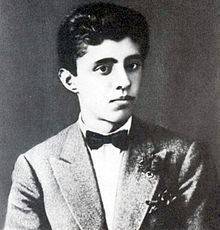 For higher education Enver was allocated a state scholarship. It was during his student years spent in France that Enver Hoxha began to acquaint himself with socialist literature, including the works of Karl Marx, Friedrich Engels and Vladimir Lenin. For his heightened interest in socialist ideas, Enver was soon expelled from the university. However, sympathy for socialism did not prevent Khoja from obtaining the post of secretary of the Albanian embassy in Belgium - it is obvious that the Hoxha family had good "garters" at the highest level, but the individual abilities of the future Albanian leader should not be disregarded.
For higher education Enver was allocated a state scholarship. It was during his student years spent in France that Enver Hoxha began to acquaint himself with socialist literature, including the works of Karl Marx, Friedrich Engels and Vladimir Lenin. For his heightened interest in socialist ideas, Enver was soon expelled from the university. However, sympathy for socialism did not prevent Khoja from obtaining the post of secretary of the Albanian embassy in Belgium - it is obvious that the Hoxha family had good "garters" at the highest level, but the individual abilities of the future Albanian leader should not be disregarded. European universities and instability at home
Just in those years when young Enver Hoxha completed his studies at the lyceum, large-scale changes took place in the political life of Albania. As you know, after the proclamation of independence of Albania in 1912, the country received the status of a principality. For a long time they were searching for a likely candidate for the Albanian throne. In the end, in 1914, the Albanian prince became Wilhelm Weed (1876-1945) - the scion of one of the aristocratic German surnames, the nephew of the Romanian Queen Elizabeth. He adopted the Albanian name Scanderbeg II. However, his reign lasted only a short time - three months after the ascension to the throne, William Weed left the country. This happened because of the prince’s fears for his life — the First World War had just begun and Albania turned into an “apple of discord” between several states - Italy, Greece, Austria-Hungary. But formally, William Vid remained the Albanian prince until 1925. Although there was no centralized power in the country at that time, it was not until 1925 that Albania was proclaimed a republic. This was preceded by violent political events.
At the beginning of the 1920's power in the country was actually concentrated in the hands of Ahmet Zog. A native of the influential Albanian Zogollah family, whose representatives occupied government posts during the Ottoman rule, Ahmet Zogu (1895-1961) was called Ahmed Bey Mukhtar Zogollah at birth, but later “Albanized” his first name and surname. By the way, the mother of Ahmet Zog Sadia Toptani built her clan to the famous hero of the Albanian people Skanderbeg. However, in 1924, Mr. Ahmet Zogu was overthrown by an uprising of democratic forces. After some time, Theophanes, an Orthodox bishop of the Korczyn Diocese, came to power in the country, and Fan Stylian Noli (1882-1965) came to the world. It was a unique person - a high-ranking cleric, but a supporter of the complete separation of the church from the state; coming from the Hellenized environment, but a fiery Albanian nationalist; a polyglot who owned 13 languages and translated Khayyam, Shakespeare and Cervantes into Albanian; a former theatrical prompter and actor who traveled the world, and then became a priest and made a career in the church. Looking ahead, let's say that after emigration to the United States, at 53, the bishop Theophan entered the Boston Conservatory and brilliantly graduated from it, and then defended his doctoral dissertation on the philosophy of Scanderbeg. Such was the man Feofan Noli, who never managed to create a democratic republic in Albania. In December of the same 1924, Mr. Ahmet Zogu carried out a coup d'etat. He returned to the country, accompanied by a detachment of Russian white émigrés who were lodging in Yugoslavia. The commander of the Russian Guards Zog commanded the famous Colonel Kuchuk Kaspoletovich Ulagay. The deposed Theophanes Noli fled to Italy.
king of albania ahmet zogu
In January, 1925, Mr. Ahmet Zogu, officially declared Albania a republic, and himself its president. However, three years later, on September 1 1928, Ahmet Zogu proclaimed Albania a kingdom, and he himself was crowned as a monarch under the name Zogu I of Scanderbeg III. Zog's reign at the end of 1920's - 1930's. characterized by attempts to modernize Albanian society and transform Albania into a modern country. This task was given with difficulty - after all, Albanian society was actually a conglomeration of mountain tribes and clans, who lived according to their own laws and had a very vague idea of statehood. Economically and culturally, Albania was also the most backward country in Europe. In order to overcome this backwardness at least somehow, Zog sent the most talented Albanians to study at European universities. Under this program, apparently, the young Enver Hoxha also fell.
During his stay in Europe, Khoja became close to the circle led by Lazar Fundo (1899-1945). Like Hodge, Fundo came from a family of a wealthy merchant and was also sent to France in his youth, only he studied legal, not natural, science. Returning to Albania, he participated in the overthrow of Zog in 1924 and the approval of the regime of Bishop Theophanes Noli. After Zogh returned to power, Lazar Fundo emigrated to Europe again - this time to Austria. However, later the paths of Lazar Fundo and Enver Hoxha diverged. Fundo sympathized with the Trotskyists (for which he subsequently lost his life, despite his obvious merits in the communist movement), and Enver Hoxha became an ardent follower of Joseph Stalin and expressed undoubted support for the course of the CPSU (B). When he was in France and Belgium, Hoxha worked closely with the newspaper of the French Communists “Jumanite”, translated Stalin’s speeches into Albanian and joined the Belgian Communist Party. Since the positions of the communist movement in Albania were very weak, the older comrades Hoxha recommended that he return to his homeland and establish contacts with the local communist movement. Enver did just that - in the spring of 1936, he arrived in Albania and settled in the town of Korca, where he got a job as a teacher of French. In parallel, Enver Hoxha was actively engaged in social activities. He was elected to the leadership of the local communist group in Korce, and also headed the communist group in Gjirokastra, the city of his childhood. After the head of the Korce Kelmendi communist organization died in 1938 in Paris, with the support of the Bulgarian Communist leader G. Dimitrov, Enver Hoxha was elected the head of the Korce Municipal Committee. Thus began his ascent to the very top of the Albanian communist movement, and subsequently the Albanian state.
Italian occupation of Albania
Meanwhile, the foreign policy position of Albania remained rather difficult. When Ahmet Zogu proclaimed himself king, he designated his title not as “the king of Albania”, but as “the king of the Albanians”. This contained an unambiguous hint at the division of the Albanian people - part of the land inhabited by the Albanians was part of Yugoslavia. And Zog argued that his goal is to unite all ethnic Albanians in a single state. Naturally, this position of the Albanian king caused a sharp negative on the part of the Yugoslav leadership, who reasonably saw in the policy of Zog an attempt on the territorial integrity of Yugoslavia. On the other hand, Turkey, with which Albania had very old and developed cultural and political ties, was also dissatisfied with the policy of Zog, just for another reason. The convinced Republican Mustafa Kemal Atatürk was very unhappy with the proclamation of Albania as a monarchy and until 1931, the Turkish state did not recognize the Zogu regime. Finally, the relations of Albania with Italy were not without a cloud. Italy, with the strengthening of its political positions in Europe, increasingly claimed the leading role in the Balkans, and Albania saw it as an outpost of its influence in the region. Since Albania was once under the rule of the Venetians, the Italian fascists considered the inclusion of Albania into Italy as the restoration of historical justice. Initially, Benito Mussolini actively supported Zog, and the Albanian king was impressed by the fascist regime established in Italy. However, Zog was not going to completely subjugate Albania to the Italian influence - he led a rather cunning policy, bargaining with Mussolini for all sorts of loans, especially relevant to the Albanian state in the context of the global economic crisis and the associated impoverishment of the Albanian population. At the same time, Zogu sought new patrons among other European powers, which greatly irritated the Italian leadership. In the end, Zogu went on the aggravation of relations with Rome. September 1932 was marked by the prohibition of the education of Albanian children in schools owned by foreign nationals. Since most schools were Italian, this decision of the Albanian government caused a sharply negative reaction from Rome. Italy recalled the teachers and removed all the equipment, then in April 1933 of Zogu interrupted negotiations with Italy on the fulfillment by Albania of its debt obligations.
Mid 1930's was marked for Albania by a further increase in domestic political instability. Thus, among the Albanian feudal lords and officers dissatisfied with the policies of Zog, an organization was formed that planned an armed uprising in Fier. According to the plans of the conspirators, after the overthrow of Zog, the monarchy in Albania was supposed to be eliminated, and the head of the republic was to be Nureddin Vlori — a representative of one of the most distinguished Albanian feudal families, a relative of the founder of the Albanian state, Ismail Kemali. However, the government managed to preempt the plans of the conspirators. 10 August Nureddin Vlorë was arrested. 14 August in Fier there was a speech by opponents of Zog, during which the rebels killed the inspector general of the royal army, General Gilyardi. Government forces and gendarmes managed to suppress the attack, 900 people were arrested, and 52 was sentenced to death. However, the power and authority of Zog seriously shaken. The next blow to Zog was the story of his marriage. Initially, Zogu was engaged to the daughter of Shefket Verlaji, the largest Albanian feudal lord, but terminated the engagement, intending to marry the daughter of the Italian king. The princess of Italy, however, refused the Albanian king. But Zogu seriously spoiled relations with Verlaje, who considered the behavior of the king a terrible insult for his family. Subsequently, the Italians occupying Albania will bet on Verlagi. In the end, Zogu married the Hungarian Countess Heraldine Upponi. The wedding of Zogu and Upponi, held on 27 on April 1938, was also visited by Galeazzo Ciano, the Italian foreign minister, who took over the leadership of the “Albanian operation”. Zog, knowing full well that Italy will sooner or later invade the territory of Albania, held meetings to strengthen the country's defense, although it was initially clear that the Albanian army would not be able to protect the state from Italy’s many-times superior forces.
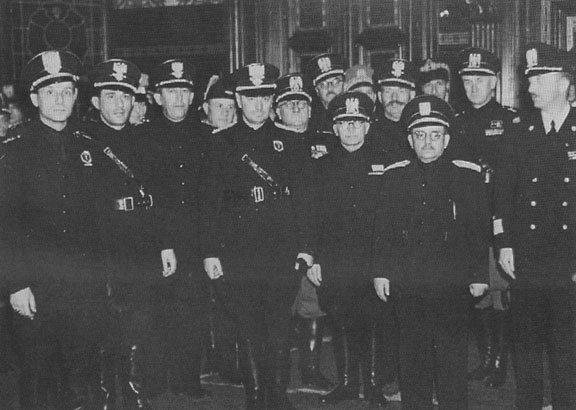
- Albanian fascists
In April, 1939 Italy delivered an ultimatum to the King of Albania. In every possible way delaying the response time, Zog began to transport the treasury and the courtyard to the borders of Greece. The capital of Albania Tirana left most of the highest dignitaries of the royal regime. 7 April 1939 units of the Italian army under the command of General Alfredo Hudzoni landed in the ports of Vlora, Durres, Saranda and Schengin. King Zogu fled, and on April XIUMX the Italians entered Tirana. 8 April surrendered to Shkodra and Gjirokastra. Shefket Verlaji became the new prime minister of Albania. Albania and Italy concluded a “personal union”, in accordance with which the Italian king, Victor Emmanuel III, became the new head of Albania. April 9 was presented with the Scanderbeg Crown. An Albanian fascist party was formed, which was actually a local branch of the Italian fascists. Albanian fascists, inspired by Rome, put forward territorial claims to Greece and Yugoslavia, demanding to transfer to Albania all the lands inhabited by Albanians. The creation of the “Great Albania”, which was supposed to include Albania itself, Kosovo and Metohija, part of the territories of Montenegro, Macedonia and Greece, became the strategic goal of the party, and for the Italian leadership the idea of “Great Albania” later became one of the most important pretexts for unleashing an aggressive war against Greece The head of the Albanian fascist party was Prime Minister Shefket Verlaji, and the secretary was Mustafa Merlika-Krui, who later replaced Verlaji as head of the Albanian government.
The formation of the partisan movement
Meanwhile, the Albanian communist movement developed underground. Enver Hoxha in March 1938 was sent to study in the USSR, where he studied at the Marx-Engels-Lenin Institute and the Institute of Foreign Languages. In April, 1938 met his first meeting with Joseph Stalin and Vyacheslav Molotov, which further strengthened his sympathies for Stalin’s domestic and foreign policy. He promised the Moscow patrons to create a united and strong Communist Party in Albania. Returning to Albania, Khoja in April 1939 was dismissed from teaching because of his refusal to join the Albanian fascist party. As a teacher, he was supposed to become a member of a fascist organization, but, of course, refused the offer. Khoja engaged in illegal propaganda work, for which he was sentenced in absentia by an Italian court to the death penalty. However, Enver continued to be on the territory of his native country, engaging in propaganda activities among the workers of seaports and oil fields. Discontent with the Italian occupation grew among the Albanians, and anti-fascist sentiments spread in different layers of Albanian society. The inhabitants of the country, less than thirty years ago, gained political independence, were very much affected by the foreign occupation regime. The first Albanian partisan detachments appeared, which began to sabotage and sabotage. Enver Hoxha himself opened a tobacco shop in the capital Tirana, which became the epicenter of the Moscow underground. 7 November 1941, on the anniversary of the October Revolution, at the secret meeting in Tirana, the creation of the Communist Party of Albania was proclaimed. Kochi Dzodze (1917-1949) was elected its first secretary, and Enver Hoxha became his deputy and commander-in-chief of the guerrilla-controlled partisan formations, which operated mainly in the areas of southern Albania.
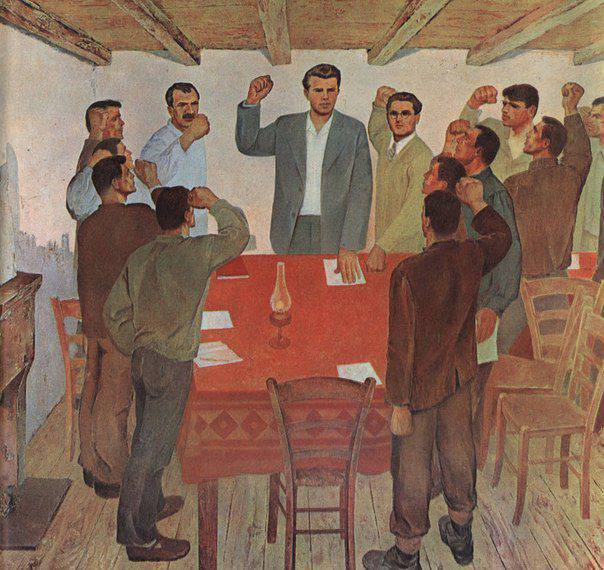
In 1942, Mr. Enver Hoxha again visited Moscow, where he met with the highest Soviet leaders, Stalin, Molotov, Malenkov, Mikoyan and Zhdanov, as well as with the Bulgarian communist Dimitrov. He once again emphasized his intentions to start building Leninist-Stalinist socialism in Albania, and also stressed the need to restore full political independence of Albania after its final liberation from foreign occupiers. This statement of Hoxha violated the plans of the British and American allies of the USSR, since Churchill admitted the possibility of a post-war partition of Albania between Greece, Yugoslavia and Italy. However, these Churchill plans put an end to the political independence of Albania and the very future of the Albanians as a single nation. Therefore, not only Khoja and the Communists, but also other representatives of the patriotic forces of the Albanian people were categorically against the implementation of the “British project” and supported the idea of the post-war construction of an independent Albanian state.
National Liberation Front and the "ballista"
Supporters of the anti-fascist movement in Albania were not only the Communists, but also representatives of the so-called. “True nationalism” - that is, that part of the Albanian nationalist movement that did not recognize the collaborationist government and saw in Italy’s occupation of Albania only negative consequences. 16 September 1942 was held in the village of Bolshaya Peza a conference in which the communists and “real nationalists” participated. Following the conference, it was decided to unite efforts in the struggle for independent and free democratic Albania, to develop armed resistance to the Italian fascists and Albanian collaborationists, to unite all the patriotic forces of Albania in the National Liberation Front. He was elected the General National Liberation Council, which included four nationalists - Abaz Kupi, Baba Faya Martaneshi, Mueslim Peza and Haji Leshi, and three communists - Umer Dishnitsa, Mustafa Ginishi and Enver Hoxha. In June, 1943 was also included in the Council’s membership, the returning communist Seyful Maléchoff.
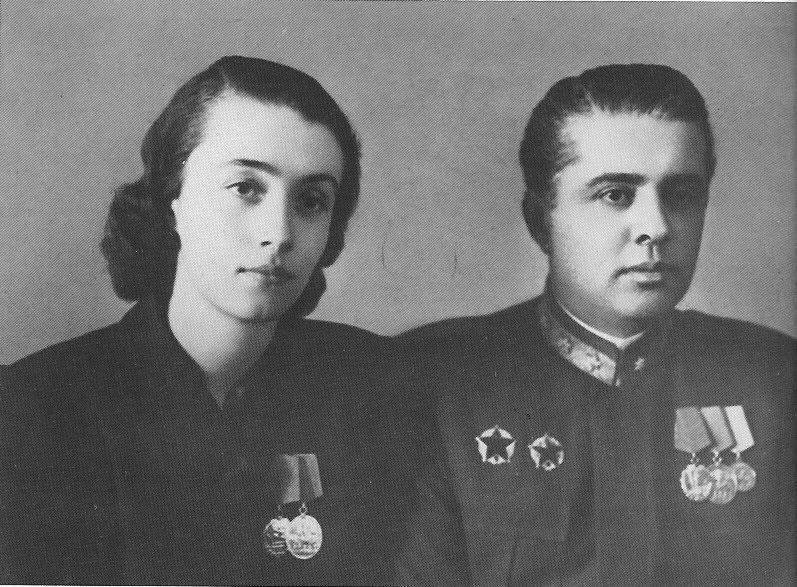
Enver Hoxha and his wife Nejie Rufie (Hoxha)
Also, another political movement in the country, the Bally Kombetar, the National Front, led by Mehdi Bey Frasheri, went over to the armed resistance of the Italians. Another insurgent organization that attempted to move to armed resistance against the Italian occupiers was the Legalism movement, led by former royal government official Abaz Coupé. "Legal" adhered to royalist positions and advocated for the liberation of Albania from the Italian occupation and the restoration of the monarchy with the return to the country of King Zog. However, the royalists had no serious influence on the partisan movement, since among the majority of the country's population the king and the royal regime were discredited by their policies long before the Italian occupation of Albanian territory. In December, the anti-fascist coalition countries officially recognized and supported the national liberation struggle of the Albanian people against Italian fascism. Gradually, an ever wider section of the country's population joined the anti-fascist guerrilla movement, and interaction grew between the two main political forces of the anti-fascist orientation - the National Liberation Front and the National Front. 1942-1 in August 2 in the village of Mukhye at the conference of the National Liberation Front and the National Front, the Provisional Committee for the Salvation of Albania was established, which included 1943 delegates from each organization. Since the National Front was represented by six nationalists, and from the National Liberation Front came three nationalists and three communists, the main force in the Committee for the Salvation of Albania became the nationalists.
On July 10, the General Council of the National Liberation Front issued a decree on the creation of the general headquarters of the guerrilla units of Albania, and after 1943 days, on July 17 27, the National Liberation Army of Albania (NOAA) was created. Thus, the partisan movement in the country has become centralized. NOAA was divided into brigades of four to five battalions. Each battalion included three to four partisan detachments. The territory of the country was divided into operational zones with their headquarters subordinate to the General Staff. Enver Hoxha became the commander-in-chief of NOAA. In September, Nazi Italy capitulated to 1943, after which Wehrmacht units invaded Albania. It is significant that the 1943-I Italian army, deployed in Albania, almost completely moved to the side of the Albanian partisans and formed the partisan "Antonio Gramsci", which was led by Sergeant Tercilio Cardinali.
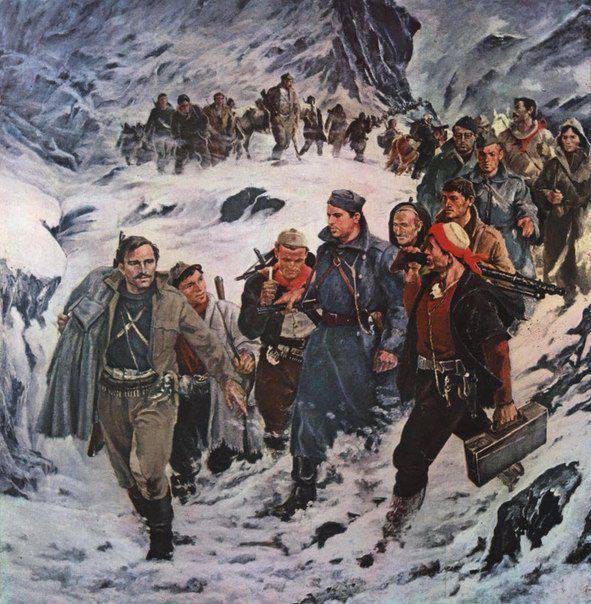
The German occupation of the country led to major changes in the alignment of political forces in Albania. Thus, the National Front (“Bally Kombetar”), consisting of nationalists, concluded a cooperation agreement with the Germans and became an opponent of the Albanian national liberation army. The fact is that the political program of the “ballists” implied the creation of the “Great Albania”, which should include, besides Albania itself, also Kosovo and Metohija, a part of Greece, Macedonia and Montenegro. Mehdi Bey Frasheri, who created the Bally Kombetar, focused on the reunification of all Albanian lands, divided after the defeat of the Ottoman Empire, within a single state, and in addition, proclaimed the Albanians "Aryans" - the heirs of the ancient Illyrian population of the Balkans, who have full rights to the South Balkans territory. The Nazis, promising to assist in the implementation of these plans, enlisted the support of the Bally Combetar. The leadership of the National Front declared the political independence of Albania and concluded an agreement with Germany on joint actions. Armed formations of the "ballists" began to take part in the guarding and punitive measures of the Hitler forces not only in Albania, but also in neighboring Greece and Macedonia. "Ballista" served in the 21-th Albanian SS division "Scanderbeg", the regiment "Kosovo" and the battalion "Lyuboten". In addition to the SS units, there were also Albanian collaborationist formations of the so-called “independent” Albanian government, which included the 1 and 4 infantry regiments, the 4 battalion of the fascist militia and the gendarmerie, which in the spring of 1943 was formed by General Frank Previ. However, the number of Albanians who served Hitler in the ranks of the SS and collaborationist formations was significantly lower than the number of partisan brigades. The SS units, staffed by Albanian fascists, were distinguished by low combat effectiveness and inevitably suffered defeats in clashes with partisan formations, but they showed themselves well in punitive operations. "Ballista" of these units of Hitler's troops participated in numerous ethnic cleansing in the territory of Kosovo and Metohija, Macedonia and Montenegro, famous for their incredible cruelty and even more contributed to the growth of national hostility between the Slavic and Albanian population of the Balkan Peninsula. It is in the hands of the Albanian fascists from the Skanderbeg division, the Kosovo regiment and some other units - the blood of thousands of Serbian, Macedonian, Greek, Jewish inhabitants of the Balkan Peninsula.
The national liberation army fights and wins
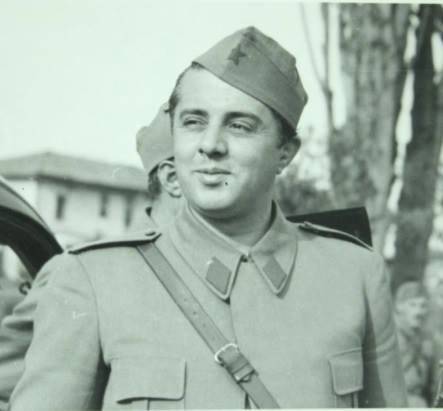 Naturally, the cooperation of antifascists from NOF with the “ballists” immediately came to an end, especially since even before an agreement with the Hitlerites, the cooperation of the NOF with the “ballists” caused an extremely negative reaction of the Yugoslav and Greek communists, who directly characterized the “ballists” as fascists and threatened the Albanian Communists complete rupture of relations and the cessation of any assistance in the case of continued cooperation with the last "Bally Comberat." In turn, after the invasion of the German troops and the proclamation of the formal independence of Albania under the leadership of the "Bally Kombetar", the "ballists" declared war on the National Liberation Army of Albania and the People’s Liberation Army of Yugoslavia. In 1943, the first armed clashes began between NOAA guerrilla units and the "ballistami". However, at the turn of 1943-1944. NOAA was a far more serious force than the "ballista" and collaborators. The number of NOAA combat units reached 20 thousands of soldiers and commanders. Nevertheless, the Germans managed to inflict a number of serious defeats on the Albanian partisans, which resulted in NOAA being pushed back into the mountainous regions. The headquarters of the partisan movement was blocked in the area Chermenika.
Naturally, the cooperation of antifascists from NOF with the “ballists” immediately came to an end, especially since even before an agreement with the Hitlerites, the cooperation of the NOF with the “ballists” caused an extremely negative reaction of the Yugoslav and Greek communists, who directly characterized the “ballists” as fascists and threatened the Albanian Communists complete rupture of relations and the cessation of any assistance in the case of continued cooperation with the last "Bally Comberat." In turn, after the invasion of the German troops and the proclamation of the formal independence of Albania under the leadership of the "Bally Kombetar", the "ballists" declared war on the National Liberation Army of Albania and the People’s Liberation Army of Yugoslavia. In 1943, the first armed clashes began between NOAA guerrilla units and the "ballistami". However, at the turn of 1943-1944. NOAA was a far more serious force than the "ballista" and collaborators. The number of NOAA combat units reached 20 thousands of soldiers and commanders. Nevertheless, the Germans managed to inflict a number of serious defeats on the Albanian partisans, which resulted in NOAA being pushed back into the mountainous regions. The headquarters of the partisan movement was blocked in the area Chermenika. However, despite all the efforts, the units of the Wehrmacht did not succeed in capturing Permeti, which was of great strategic importance in the defense system of NOAA. It was in Permet 24 in May 1944 that the creation of the Anti-Fascist National Liberation Council was announced, which took over the authority of the supreme power in the country in the face of resistance to the German fascist invaders. The communist Omer Nishani (1887-1954), the oldest Albanian revolutionary, who participated in the creation of the Albanian National Revolutionary Committee in Vienna, was elected chairman of the ANOS. Communist Kochi Dzodze, non-party Hassan Pulo, and nationalist Baba Faya Martaneshi became deputy chairmen of the council. Communists Kochi Tashko and Sami Bakholy were elected secretaries of the council. By decision of the Council, the Anti-Fascist National Liberation Committee was formed, which has the powers of the Albanian government. In accordance with the decision of the ANOS, military ranks were introduced in the National Liberation Army of Albania. Enver Hoxha as commander-in-chief of the army received the military rank of "Colonel-General". The chief of the General Staff, Spiru Moisiu, who previously served in the Albanian royal army with the rank of major, was promoted to major general. In the same May 1925, the 1944-division of NOAA was formed, which included 1-I, 1-I and 2-I guerrilla brigades. In August, 5 was formed by the 1944 shock division of NOAA, which, together with the 2 division, formed the 1 army corps. By this time, the strength of the National Liberation Army of Albania reached 1, 70 fighters and commanders, united in 000 brigades and territorial battalions.
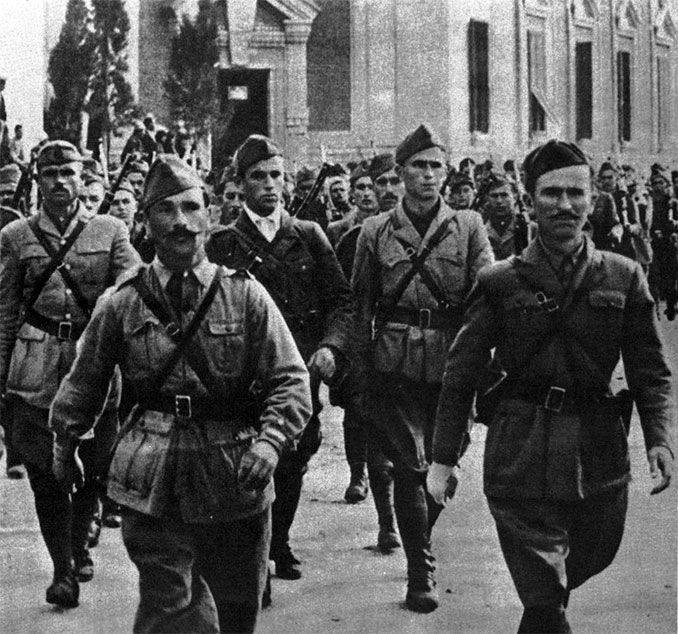
By the summer of 1944, the Albanian patriots had managed to press the German occupiers noticeably and by the end of July to gain control over a number of important areas in Northern and Central Albania. During the period under review, NOAA consisted of 24 brigades and fought not only against the Wehrmacht and the SS Scanderbeg SS division, but also against the armed forces of the Albanian feudal lords. In the autumn of 1944, through the efforts of the National Liberation Army of Albania, the Wehrmacht units were driven out of the country's territory and retreated into neighboring Yugoslavia, where they continued to fight with local partisans, as well as Albanian patriots and Italian anti-fascists who were pursuing them. October 20 1944 d. The 2 th meeting of the ANOS transformed the Anti-Fascist National Liberation Committee into the Provisional Democratic Government. A law was also passed on elections to national liberation councils and the goal was set for the complete liberation of Albania from foreign invaders in the near future. The current military situation testified in favor of the realism of this goal. 17 November 1944 The units of the National Liberation Army of Albania liberated Tirana, and 29 November 1944 the Wehrmacht formation and formation of Albanian collaborationists were forced to leave Shkodra, which remained the last stronghold of Hitlerism in the north of the country. In 1945, the 3, 4, 5 and 6 divisions of the National Liberation Army of Albania were formed, which were sent to neighboring Kosovo to help the Yugoslav People's Liberation Army in the fight against the defending forces on the Yugoslav land SS and collaborators. In June 1945, Commander-in-Chief of the National Liberation Army of Albania, Colonel-General Enver Hoxha visited the Soviet Union, where he attended the Victory Parade and met with I.V. By Stalin. A new, post-war era began in the life of the Albanian state.
To be continued ...
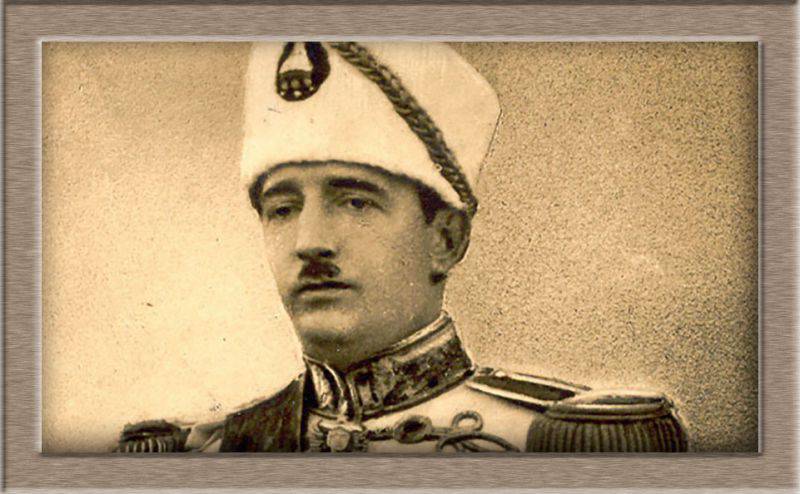
Information